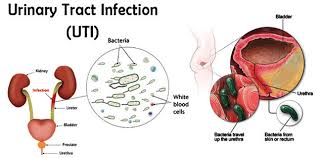Prevalence, Biofilm Formation, and Antimicrobial Resistance of Uropathogens Isolated from Patients with Urinary Tract Infections in Misurata, Libya
DOI:
https://doi.org/10.69667/rmj.25403Keywords:
Urinary tract infections (UTIs), Uropathogens, Biofilm formation, antimicrobial resistance (AMR), Multidrug resistance (MDR), Misurata.Abstract
Urinary tract infections (UTIs) are among the most prevalent bacterial infections, affecting all ages and ranging from uncomplicated cystitis to severe pyelonephritis. This study was conducted to determine the prevalence of uropathogens causing urinary tract infections (UTIs), their capacity for biofilm formation, and their antimicrobial resistance patterns in Misurata, Libya. A cross-sectional study was conducted at two medical centers in Misurata. A total of 40 patients clinically diagnosed with UTIs were included. Patient ages ranged from 5 to 88 years, and the majority of them were female (80%). All isolates were identified using standard microbiological techniques. Identified bacteria were subjected to biofilm detection using the Congo Red Agar (CRA) method, and antimicrobial susceptibility testing was performed using the Kirby-Bauer disk diffusion method. Staphylococcus aureus (37.5%) and E. coli (32.5%) were the most predominant bacteria among UTI patients, followed by Coagulase-negative staphylococci (CONS) (15%), P. aeruginosa (7.5%), and Klebsiella spp. (5%) and Streptococcus spp. (2.5%). Biofilm formation on Congo Red Agar was observed for 40% of the isolates, with the highest frequency in P. aeruginosa (2/3; 66.7%), followed by S. aureus (8/15; 53.3%) and Klebsiella spp. (1/2; 50%). Antimicrobial susceptibility testing revealed variable resistance patterns, particularly to amoxicillin, nitrofurantoin, and ceftriaxone. Multidrug resistance was detected in several isolates, including E. coli, S. aureus, Pseudomonas spp., Klebsiella spp., and CONS. Although the sample size was small, the detection of pathogenic bacteria with biofilm-forming capacity and multidrug resistance represents a significant clinical concern and underscores the urgent need for ongoing antimicrobial resistance surveillance. Further studies with larger sample sizes and molecular characterization of resistance and biofilm-associated genes will provide deeper insight into the epidemiology of uropathogens in Libya and guide effective treatment strategies for UTI management.

Downloads
Published
Issue
Section
How to Cite
Similar Articles
- Shahrazad Ahmed, Neyaf Alageedi, Eman Muhsin, Doaa Abdulwahab, The Role of Immune Response in Bacterial Urinary Tract Infections in Iraq: A Review , Razi Medical Journal: Volume 1, Issue 2, 2025
- Shahad Alwan, Molecular detection of the MexA efflux pump gene in Pseudomonas aeruginosa isolated from Diyala Province , Razi Medical Journal: Volume 1, Issue 3, 2025
- Ahmed Alsharksi, Abdalla Ali, Adam Mustapha, Muna Alshagmani, Bacterial Profile and Their Antimicrobial Susceptibility Pattern of Isolates Recovered from Intensive Care Units of Libyan Hospitals. , Razi Medical Journal: Volume 1, Issue 3, 2025
- Nawfal Hussein, Liwar Ahmed, Halder Abozait, Antimicrobial Resistance in Iraq: A Public Health Emergency in the Shadow of Conflict , Razi Medical Journal: Volume 1, Issue 3, 2025
- Raja Moman, Nouralhuda Altair, Abdulkarem Tamer, Amnnah Ghalbun, Nagat EL-Magrahi, Antibiosis of Antibiotics, Honey and Probiotics Related Bacteria to Diabetic Foot Infections , Razi Medical Journal: Volume 1, Issue 1, 2025
- Mahmud Abushhewa, Mohamed Agilla, Ashraf Naass, Khadega Alazoumi, Abdulati Salem, Taj Al-Din Jaber, Mohammed Abdulqadir, Knowledge, Attitude, and Practices about Antibiotic Misuse among Libyan Community: A Cross-Sectional Survey , Razi Medical Journal: Volume 1, Issue 3, 2025
- Mufeedah Mansour, Khoulah Alaribi, Prevalence and Outcomes of Coagulase-Negative Staphylococci in Newborns Admitted to the NICU in a Tertiary Hospital in Libya , Razi Medical Journal: Volume 1, Issue 2, 2025
- Omar Alhaddad, Tasneem Shneshah, Safa Alzuwawi, Sarah Alkuawylidi, Lamis Mafa, Assessment of Hand hygiene knowledge Among Undergraduate Medical Students and Intern Doctors in Misurata University, Libya: A Cross-Sectional Study , Razi Medical Journal: Volume 1, Issue 3, 2025
- Faisal Ali Matoug, Taher Alkesa, Esam Alsaghair, Fathi Elzowawi, Wesam Elsaghayer, Acute Intestinal Obstruction: A Retrospective Study at Misurata Medical Center , Razi Medical Journal: Volume 1, Issue 4, 2025 (October to December)
- Sara Fathi, Heba Hassan, Laila Alfageih, Prevalence of Carbapenem-Resistant Enterobacteriaceae Isolated from Clinical Samples in Medical Tobruk Center , Razi Medical Journal: Volume 1, Issue 3, 2025
You may also start an advanced similarity search for this article.








